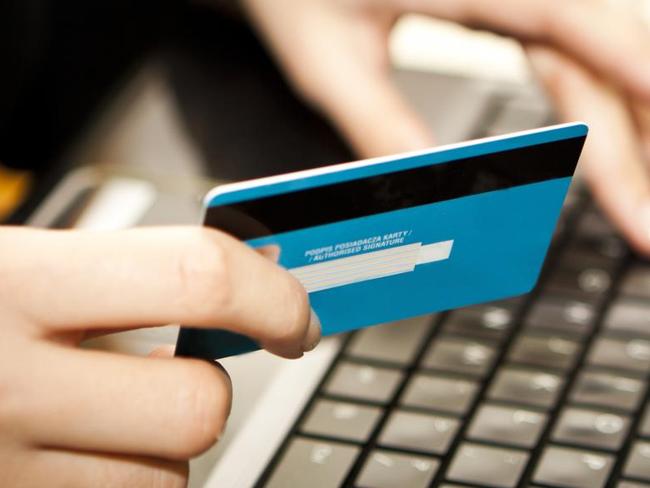Barefoot Investor: Why new payments system will change the way you bank
BAREFOOT Investor Scott Pape is a big fan of the new banking payments system that has begun rolling out. Here’s how it will work and why it will change the way you bank.
Business
Don't miss out on the headlines from Business. Followed categories will be added to My News.
WHEN I was a pimply-faced teenager, I worked briefly as a checkout chick (well, rooster) at Target.
About an hour into each shift I’d take most of the cash out of my till, stuff it into a plastic canister, and then, like the flush of a toilet on an aeroplane, it would be ‘whooshed’ up a chute and through a set of pipes to the manager’s office.
The Australian banking system is built on its own set of pipes, which have been getting a bit rusty of late. Honestly, transferring money from one bank to another has been a pain in the chute. Well, for us. It’s actually worked out pretty damn well for the banks, who were able to sit on our money for a few business days and earn interest!
NEW PAYMENTS PLATFORM WILL ENABLE ALMOST INSTANT TRANSFERS
MEDICINAL CANNABIS TO BE EXPANDED FOR MORE YOUNG VICTORIANS
FIRST MEDICINAL CANNABIS CROP TO HELP SICK CHILDREN

Yet all this changes this week with the launch of the New Payments Platform (NPP). What’s that?
Instant payments. No more trying to remember your BSB and account number. No more waiting around for ‘bank holidays’ (which is the day bank bosses strip down to their trunks and dive into their Scrooge McDuck coin swimming pools). You can transfer money almost instantly, 24/7, 365 days a week.
Now, a few banks say their rollout of the NPP will be delayed a few months (they’re still cleaning out their old pipes, apparently), but my bank (ING) is already live.
Your bank may not be ready yet, but when it is, here’s how you get onto the NPP.
The first step is to log in to your internet banking and create your PayID, which you could set as, say, your mobile number or your email address.

Then, the next time you want someone to pay money into your account, just give them your PayID.
The option to pay via PayID will appear in your normal online banking. Because it’s an instant payment, there’s a safeguard in place: when you enter a PayID, the name of the person who owns the PayID will be shown (as in “the following PayID, love-rat-beetroot@hotmail.com, belongs to Barnaby Joyce”).
Once you’ve confirmed your target, hit confirm, and the money will ‘whoosh’ into the person’s account.
Welcome to 2018. Tread Your Own Path!
YOU’D BE A DOPE TO DABBLE IN POT PLAYERS
A COUPLE considering dabbling in the dot bong boom need some advice on investing in pot players.
Barefoot Investor Scott Pape has a simple, old-fashioned rule when it comes to investing — only invest in companies that make money.
But does the medicinal marijuana market a safe choice for first time investors?

CHRISTINE WRITES:
We are in our mid-40s with a combined income of $110,000. We own our home and have an investment property worth about $420,000.
We would like to further secure our future and are thinking of investing a small amount, $3000 to $5000, in shares in a medical cannabis company.
We could invest more but, because we have never played the share market and do not really know anything about it, would like to start small. What are your thoughts, and do you think medical cannabis is a safe choice?
BAREFOOT REPLIES: The dot bong boom! Mark my words, the medicinal marijuana business is set to explode. Analysts are suggesting that the domestic market could be worth $1 billion a year, and that the global market could reach as high as $US55 billion by 2025.
Even better, earlier this year the federal government gave the green light for exports of medicinal cannabis.
Health Minister Greg Hunt sparked up a spliff and told reporters, “Australia is brilliantly placed to be a world leader in medical development and medical cannabis”. Exhale.
So it is a good investment?
I have absolutely no doubt that medicinal marijuana will become a huge industry all around the world. And I also have absolutely no doubt that there are hundreds of companies around the world that are looking to cash in on this boom.

Listen, I have a simple, old-fashioned rule when it comes to investing: I only invest in companies that make money.
And none of these medicinal marijuana companies are making any money … yet. Take the largest pot player on the ASX, the Cann Group. Its share price has had a phenomenal run, up close to 500 per cent since May last year, and the company is now valued at about $350 million.
However, they’re also burning cash like Bob Marley rolling a spliff with a hundred dollar note — they lost $1,462,561 in the six months to December 31, 2017.
Despite this, they still hit investors up for more dough, even though they admitted that they had no expectations of being profitable in the short term, and that their financial projections were unreliable.
Look, if you’re just getting started in the share market, don’t dabble in dope. Now, this is the straightest thing you’ll ever hear me say: call your super fund and make a tax-deductible contribution to your fund, man.

YOU GO, GIRL
JESS WRITES: Just over a year ago I was a 17-year-old high school graduate with literally “$0” to my name. Luckily, I managed to find a farm job over the summer break before starting uni.
My boss, a charismatic Canadian lady, had just finished reading your book. She bought copies for her children and, to my surprise, one for me.
I am sure you can imagine my first thoughts — what does a 17-year-old girl need with a finance book?
Nevertheless, I decided to give it a go. Reading your book made me feel like I had been living in the dark.
There were so many things I should have known! I was taken aback by how easy it was to read and how everything was explained in a way that even I, who knew nothing about finance, could understand.
Back then I had one everyday bank account and no super fund. Fast forward to now …

I have switched to a low-cost super fund. I have set up two daily accounts (“expenses” and “splurge”) and two long-term accounts (“smile” and “fire extinguisher”), and have $3000 in “mojo”.
In the past year I have saved, using your methods, for a $3000 trip to Japan, a $3000 car, a $1000 trip to Brisbane, a $1000 University Games tournament, and $2000 for braces … and I still have $4000 of my original money from the farm job.
I have no debt, I receive no money from my parents, and I don’t worry about money.
The Barefoot Investor has helped me survive my first year out of home, and my first year as an adult. I owe you a tremendous thank you. If not for the Barefoot Investor, I’m not sure where I’d be today.
BAREFOOT REPLIES: You just nailed why I wrote my book. See, most teenagers don’t have much confidence. Especially teenage girls. And especially when it comes to money.
Let me tell you what typically happens next:
YOU turn 18, and the world is waiting to reinforce your belief that you’re no good with money;
ADVERTISERS spend billions of dollars targeting you to buy stuff you don’t need, to impress people who (you’ll eventually come to understand) don’t really care about you;
SOCIAL media makes you feel like a loser if you’re not living an expensive Instagram-filtered life;
YOUR bank will send you a credit card ... and then begin upping the limit; and WITHIN a few years your negative beliefs will become a self-fulfilling prophecy — “See, I am a loser with money! It must be true! Just look at my credit card statement!”
These negative beliefs feed on themselves. They colour your entire life. They keep you stuck in jobs you’ve outgrown, in relationships that aren’t good for you.
And life passes you by. But that’s not you, Jess. You have confidence. You’re a strong woman. No one messes with you. Keep treading your own path. You got this!
The Barefoot Investor holds an Australian Financial Services Licence (302081). This is general advice only. It should not replace individual, independent, personal financial advice.


